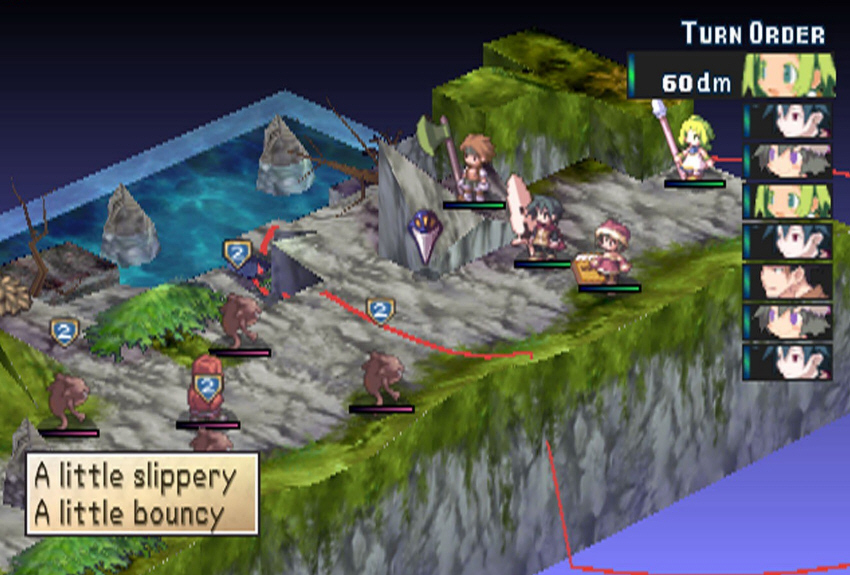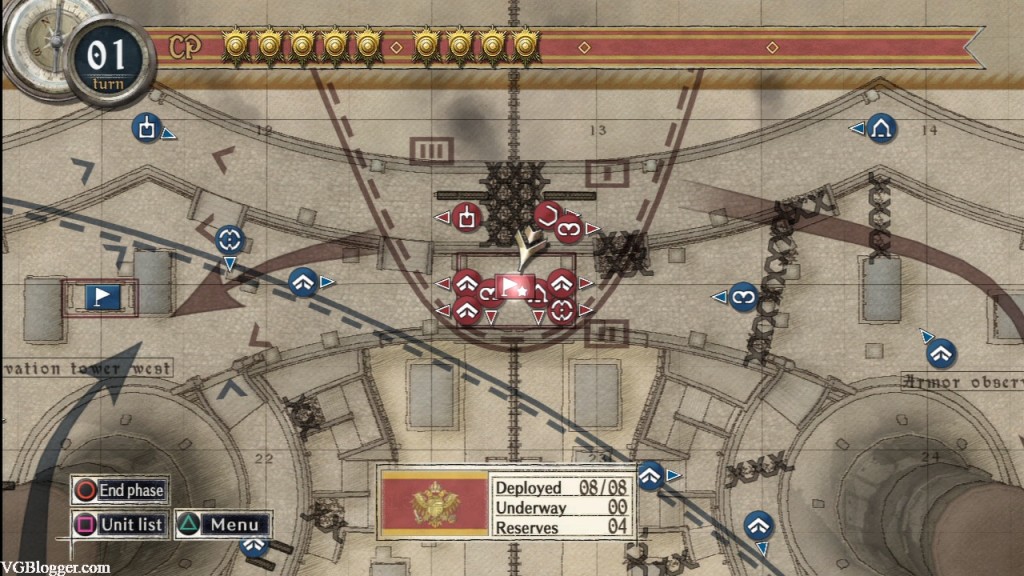7 “And when you are praying, do not use meaningless repetition as the Gentiles do, for they suppose that they will be heard for their many words. 8 So do not be like them; for your Father knows what you need before you ask Him.
Matthew 6
I finally took a break from The Wonderful 101 (more information soon!) due to the lack of ergonomic design on the GamePad. Simply put, that giant slab of gaming goodness has its downsides, and one of those downsides consists of awful wrist pain unless held in the exact right way. Since I’ve also been forced to use the GamePad during multiplayer sessions, I basically needed to take things down a notch and play something relaxing.
Enter Valkyria Chronicles. I’ve been in a bit of an anime-focused mood lately, so strategy role-playing games with unique controls/mechanics sounds right up my alley. For those who didn’t bother to pick this PS3-exclusive up in 2008 (seriously, that’s a LONG time ago), you missed out on an incredibly interesting games. Rather than move your units via tiles or even freeform like Nippon Ichi’s post-Disgaea output, Valkyria Chronicles takes things one step further by transforming each unit’s turn into a third-person shooter. By analyzing the overhead map, you can see where your units are relative to the enemy; select a unit, and you’ll zoom into their body and move them where you want. Of course, SP dictates how far you can move, but that means you just need to judge the range of your unit’s radius.

In another change from traditional genre tropes, the setting (a Japanese rendering of World War II’s European theater, if I had to take a guess) means combat takes place at range. This means careful placement of units behind cover, since any stationary unit will attack enemies that come into range. Cover also provides a defensive bonus, meaning you want to either move around said cover or destroy it. Most cover, thankfully, isn’t permanent; tanks (the lords of Valkyria Chronicles’ early battlefields), grenades, and rocket launchers can also make short work of cover.
There’s additional nuances beyond that. Since you control everything, you also aim everything; thankfully, it isn’t too reliant on statistics and level. Rather, headshots provide an enormous damage bonus like you’d expect, and explosions hurt. A lot. Behind cover, headshots won’t deal nearly as much damage, and enemy units will take full advantage of that by hiding if necessary. On the same end, you can halt their assault with multiple units behinds cover shooting them as they get into position. For the most part, enemies don’t hold any kind of advantage other than terrain since they can employ the same basic unit types as you.
In that case, there’s five character classes that all function like you’d expect. Scouts scout and have the most movement, while Shocktroopers retain the most firepower while moving in short bursts. Lancers destroy tanks, Snipers destroy units from afar, and Engineers provide lots of strange miscellaneous functions (like repairing tanks and rebuilding damage cover). All of them work in tandem to produce some fun interactions, but it really all operates around destroying cover, headshotting, and occupying the base as soon as possible. See, the game ranks you on how fast you fulfill the win conditions of any particular fight, and that rank provides more money and experience for upgrades. Thus, you want to play as well as possible.
In the grand strategy role-playing game tradition, then, this is the sort of game where grinding turns therapeutic and fun. Mini-battles apart from the main story, called “Skirmishes”, let you do a mission over and over again to build up resources. At the same time, you can mess around with different strategies with your unit set. Thankfully, Valkyria Chronicles isn’t so mean as to make experience separate for each characters, letting you level up classes as you so choose, so the grind does not feel like much of a grind. So far, doing the Skirmishes prove to be a good addition in just the pure sense of playing the game. Yes, the story missions provide more interesting locales to fight, but those ones can’t be done in rapid succession without story bits getting in the way. This is grinding, pure and simple.

And yet, I don’t have much of a problem with it. If the core feedback loops provides enough interesting aspects to its endless cycle, than I’m fine with grinding. There are games that do it well, balancing the system with grinding (Dragon Quest, Pokemon). Others take the grinding to an extreme levels for no particular reason, trying your patience with enemies that simply require time wasted rather than strategy (Tales games, sometimes). Grinding doesn’t need to be mindless, but it does need to engage the player enough to make it worthwhile. The joy of repetitive actions takes a lot of time to craft, after all, and some games just really nail that balance of trying something again and again for the purpose of improvement.
In effect, it takes a keen eye from the player to determine what’s worth and not worth their time. Some find joy in narratives rather than game mechanics, while others truly love doing the same thing over and over again (like me playing Bayonetta, for example). The problem, from a game design standpoint, is finding out whether the game’s wasting my time. Valkyria Chronicles is clearly not filled with vain repetitions and worthless stuff. It improves your strategy, and the rewards are less interesting (since they cap how much experience and money you can use between story missions) than the actual situations and circumstances at play. That, I think, is an effective grind: pleasing, brain-teasing, and interesting all at once without feeling like a grind. If the grind is masked, that means the grind works.
To use a particular philosophy example, it’s somewhat like Heidegger’s play at the question of Being. Most philosophers see it as a self-evident fact of life – being is assumed – but he questions that assumption. Being is a thing we all are, and yet we don’t often recognize it. We just simply assume that thing and go on with our lives, for if we didn’t start with it we could not live, really. What makes something ‘be” versus not “be”? Why is it so foundational? In daily life, being as a part of our innermost life (or Dasein, pretentious neologism ahoy!) just happens, and we recognize it without recognizing it. Only when we look hard and analyze do we actually see being as something constitutive to the way we live.
And sometimes, it’s up to us to determine that and find out what’s worth doing ourselves, similar to seeing or recognizing Being. We can avoid the empty repetitions in life if we just take a look and identify them. Self-honesty doesn’t take all that much effort…or does it? That’s up to you, dear reader.
